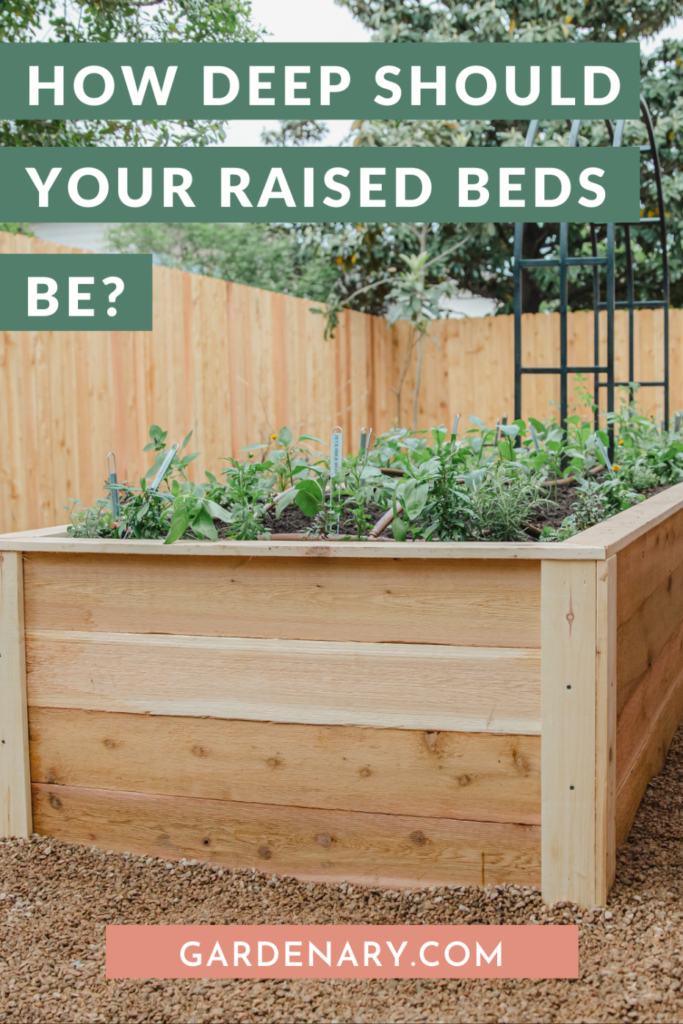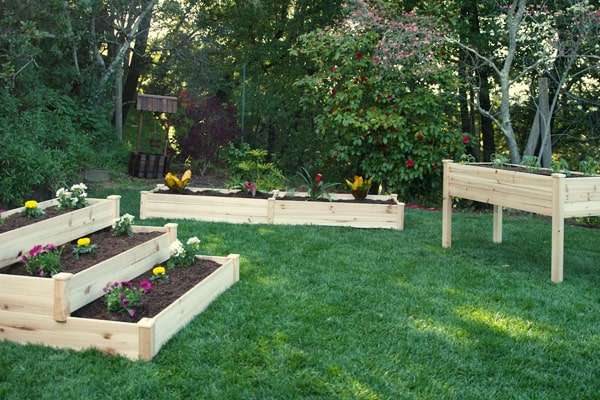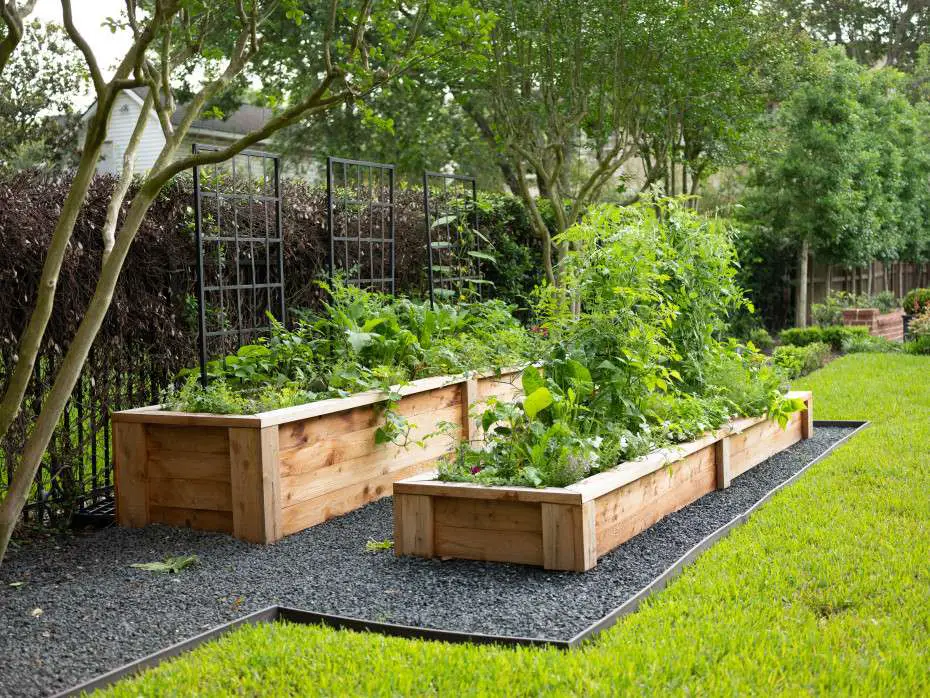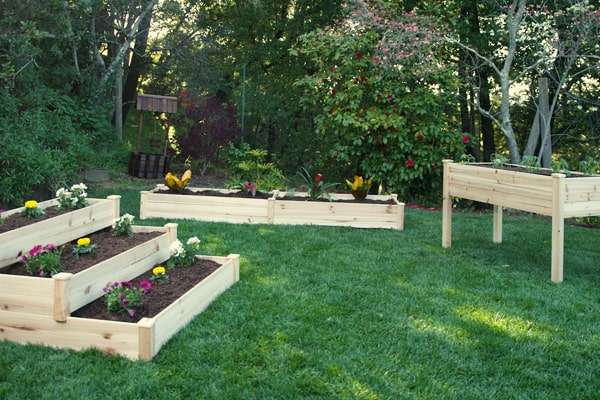In this article, we’ll be discussing the ideal height for raised beds in gardening. We’ll explore the factors to consider when determining the height and how it can benefit your garden. Whether you’re new to gardening or looking to improve your existing raised beds, this article will provide you with the insights you need. So let’s dig in and discover the perfect height for your raised beds!
The Ideal Height for Raised Beds in Gardening
Gardening enthusiasts are constantly looking for ways to optimize their garden beds and improve their overall gardening experience. One popular method that has gained significant attention in recent years is the use of raised beds. Raised beds provide numerous benefits, such as improved soil drainage, better weed control, and easy access. However, determining the ideal height for raised beds can be a challenging task. This article will explore the factors to consider when determining the height, the benefits and limitations of different heights, and provide tips for maintaining and managing raised bed gardens.

Improved Soil Drainage
One of the primary benefits of using raised beds is improved soil drainage. By elevating the planting surface, excess water can easily drain away, preventing waterlogged soil. This is particularly important in areas with clayey or compacted soil, where drainage can be an issue. The optimal height for raised beds will depend on the existing soil conditions. If the soil is particularly heavy, a higher bed may be necessary to facilitate proper drainage.
Better Weed Control
Weeds are the bane of every gardener’s existence. Luckily, raised beds can help minimize the intrusion of weeds. By creating a barrier between the garden soil and the surrounding area, raised beds reduce the chances of weed seeds infiltrating the garden. Additionally, the elevated height of the beds makes it easier to spot and remove any weeds that do manage to find their way in.

Easy Access and Less Bending
Perhaps one of the most appreciated advantages of raised beds is the ease of access they provide. By raising the growing surface, gardeners can reduce the amount of bending and kneeling required, making gardening more comfortable and accessible to individuals of all ages and physical capabilities. This is particularly beneficial for elderly or disabled gardeners who may have difficulty working at ground level. The ideal height of the raised bed will depend on the gardener’s height and physical abilities.
Extended Growing Season
Raised beds offer an extended growing season due to their unique design. The elevated height of the beds allows the soil to warm up more quickly in the spring, enabling gardeners to start planting earlier. Additionally, the beds provide better insulation, retaining heat during cooler months. This allows for a longer growing season, especially for tender plants that require warmer soil temperatures. The ideal height for raised beds in terms of extending the growing season will depend on the local climate and the specific crops being grown.

Factors to Consider for the Ideal Height of Raised Beds
When determining the ideal height for raised beds, several factors need to be taken into consideration. These factors will vary depending on the gardener’s preferences, physical capabilities, and specific gardening needs. Consider the following factors when selecting the height for your raised beds:
Planting Preferences
The type of plants you want to grow will play a significant role in determining the height of your raised beds. Some plants have shallow root systems and do not require deep soil, while others, such as root crops, need more depth. Understanding the planting preferences of your desired crops will help you determine the ideal height for your raised beds.
Gardener’s Height and Physical Capabilities
The height of the raised bed should be comfortable for the gardener to work with. Taller gardeners may prefer higher beds to alleviate the strain on their backs, while shorter gardeners may prefer lower beds for easier access. Consider your own height and physical capabilities when deciding on the height of the raised beds.
Accessibility for Individuals with Disabilities
Raised beds are an excellent option for individuals with disabilities as they provide easier access and reduce the physical strain of gardening. When determining the height of raised beds, consider the accessibility needs of individuals with disabilities. Ensuring that the beds are at a comfortable height for individuals using mobility aids, such as wheelchairs or walkers, allows them to fully enjoy the benefits of gardening.
Local Climate and Soil
Consider the local climate and soil conditions when determining the height of your raised beds. In areas with heavy rainfall, higher beds may be necessary to ensure proper drainage. Additionally, in colder regions, taller beds can provide better insulation, protecting plants from frost damage. Evaluate the specific environmental conditions in your area to determine the appropriate height for your raised beds.
Watering and Irrigation
The height of the raised beds can also impact watering and irrigation practices. Taller beds may require additional irrigation to ensure that the water reaches the plant roots effectively. On the other hand, shallow beds may dry out more quickly and require more frequent watering. Consider the watering and irrigation requirements of your plants when determining the height of your raised beds.
Determining the Optimal Height for Raised Beds
Determining the optimal height for raised beds requires thoughtful consideration of various factors, including plant roots, sun exposure, water retention, companion planting, and aesthetics. By taking these factors into account, you can create raised beds that promote healthy plant growth and a bountiful garden.
Raised Bed Height Recommendations
While there is no one-size-fits-all approach to determining the height of raised beds, certain height ranges are generally recommended. For shallow-rooted plants, a height of 6-8 inches may be sufficient. For most garden vegetables, a height of 10-12 inches is commonly recommended. Tall crops, such as tomatoes or corn, may require raised beds that are 18-24 inches high.
Calculating the Ideal Depth Based on Plant Roots
Understanding the depth of plant roots is crucial for determining the optimal height of raised beds. Shallow-rooted plants, like lettuce or herbs, typically have root systems that extend 6-8 inches into the soil. On the other hand, deep-rooted plants, like carrots or potatoes, require deeper soil, with root systems extending up to 12-24 inches. Consider the root depth of your desired plants when calculating the ideal depth of your raised beds.
Maximizing Sun Exposure and Water Retention
Sun exposure is crucial for plant growth and productivity. When planning the height of your raised beds, consider the positioning of the beds to maximize sun exposure. Taller beds should be positioned in a way that prevents overshadowing of smaller plants. Additionally, taller beds can retain more water due to their increased volume, which may be beneficial in arid or hot climates.
Considering Companion Planting
Companion planting is a gardening technique where certain plants are grown together to provide mutual benefits. In raised beds, the height of the beds can be strategically utilized to implement companion planting. For example, shorter plants that require shade, such as lettuce, can be planted near taller crops, such as corn, to provide them with shade. Consider the height requirements of companion plants when determining the height of your raised beds.
Designing for Aesthetics and Functionality
The height of raised beds can also be influenced by aesthetic and functional considerations. Raised beds can be designed to match the overall aesthetic of your garden and complement surrounding structures. Additionally, the height of the beds should be comfortable for the gardener to work with and allow for easy access to all areas of the bed. Striking a balance between aesthetics and functionality will result in a visually appealing and practical garden.

Benefits and Limitations of Different Raised Bed Heights
Different heights of raised beds have their own set of benefits and limitations. Understanding these factors will help you select the ideal height for your raised beds based on your specific gardening needs.
Low-Rise (6-8 inches) Raised Beds
Low-rise raised beds are ideal for shallow-rooted plants, such as lettuce or herbs. They require less soil, making them a cost-effective option. However, low-rise beds may not provide sufficient depth for deep-rooted plants or crops that require more extensive irrigation.
Average Height (10-12 inches) Raised Beds
Average height raised beds, ranging from 10 to 12 inches, are suitable for most garden vegetables. They provide ample soil depth for plant roots while still being easy to work with. These beds strike a balance between depth and accessibility, making them a popular choice for many gardeners.
Tall Raised Beds (18-24 inches)
Tall raised beds are often used for crops that have deep root systems or require additional insulation. These beds are beneficial in areas with heavy clay soils or colder climates. However, taller beds may be more challenging to work with, especially for individuals with limited mobility or physical capabilities.
Factors Affecting Bed Height Selection
Several factors can influence the selection of raised bed height. These include the specific plants being grown, soil conditions, watering requirements, accessibility needs, and personal preferences. Consider these factors carefully to determine the optimal height for your raised beds that best suits your individual gardening requirements.
Special Considerations for Specific Plants and Crops
Different plants and crops have unique requirements when it comes to raised bed height. Understanding these considerations will help you create a garden that maximizes the growth and productivity of your plants.
Shallow Rooted Plants
For shallow-rooted plants, such as lettuce or radishes, a lower raised bed height of 6-8 inches may be sufficient. These plants do not require extensive soil depth and can thrive in shallower beds.
Deep Rooted Plants
Deep-rooted plants, like carrots or potatoes, require more soil depth to accommodate their extensive root systems. Raised beds that are 12-24 inches high are recommended for these types of crops.
Vining and Trellised Plants
Vining plants, such as cucumbers or tomatoes, often require additional support, such as trellises. When planning the height of your raised beds, consider the height of the trellis structure to ensure that the plants have sufficient vertical growing space.
Root Crop Plants
Root crops, like beets or turnips, require deeper soil for proper development of their edible roots. Raised beds that are at least 12 inches high are recommended for root crop plants.
Companion Planting Strategies
Companion planting can be effectively utilized in raised beds to maximize space and enhance plant growth. When implementing companion planting, consider the height requirements of the plants being grown together. Taller plants should be positioned in a way that they do not overshadow or block sunlight from shorter companion plants.

Materials and Construction Tips for Raised Beds
Choosing the right materials and construction methods for your raised beds is essential for their longevity and functionality. Consider the following tips when planning and building your raised beds.
Common Materials for Raised Beds
Raised beds can be constructed from various materials, including wood, metal, plastic, or stone. Each material has its own advantages and considerations. Wood is a popular option due to its affordability and ease of construction. However, untreated wood may have a limited lifespan and can be prone to rotting over time. Metal and plastic materials offer durability, but their appearance may not appeal to all gardeners. Stone is a long-lasting option that adds a natural aesthetic to the garden, but it can be more expensive and challenging to work with.
DIY vs. Pre-fabricated Beds
When constructing raised beds, you can choose between building them yourself or purchasing pre-fabricated beds. DIY beds offer the flexibility to customize the size and shape according to your specific needs. Pre-fabricated beds, on the other hand, provide convenience and are often made from durable materials. Consider your budget, time constraints, and personal preferences when deciding whether to build your own beds or purchase pre-fabricated ones.
Construction and Assembly Guidelines
When constructing raised beds, ensure that the beds are level and securely fastened together. Use appropriate hardware, such as screws or nails, to prevent the beds from shifting or coming apart. If using wood materials, consider treating the wood with a non-toxic sealant or choose naturally rot-resistant wood, such as cedar or redwood, to prolong the lifespan of the beds.
Effectively Managing Raised Bed Soil
Managing the soil in raised beds is crucial for plant health and productivity. Fill the beds with a high-quality, well-draining soil mix that is rich in organic matter. Regularly amend the soil with compost or organic fertilizers to replenish nutrients and maintain soil fertility.
Extending the Lifespan of Raised Beds
To extend the lifespan of your raised beds, implement proper maintenance practices. Regularly inspect the beds for signs of rot, insect infestations, or structural damage. Replace any deteriorating parts promptly to prevent further damage. Additionally, avoid overwatering, as excessive moisture can lead to rot or decay. Taking these steps will help ensure that your raised beds last for many gardening seasons.
Maintaining and Managing Raised Bed Gardens
Successful raised bed gardening requires proper maintenance and management techniques. Follow these tips to ensure the health and productivity of your raised bed garden.
Watering Techniques and Irrigation Systems
Proper watering is essential in raised bed gardening. The elevated height of the beds can impact watering practices. To ensure that the water reaches the plant roots effectively, use appropriate watering techniques, such as drip irrigation or soaker hoses. Monitor the moisture levels in the soil and adjust watering frequency accordingly. Avoid overwatering, as it can lead to root rot or nutrient leaching.
Mulching and Weed Control
Mulching is an effective technique for weed control and moisture retention in raised beds. Apply a layer of organic mulch, such as straw or wood chips, around the plants to suppress weed growth and conserve soil moisture. Regularly inspect the beds for any weeds that may have escaped and promptly remove them to prevent competition with your desired plants.
Organic Fertilization Methods
Maintaining soil fertility is essential for the long-term health and productivity of your raised beds. Use organic fertilizers, such as compost or well-rotted manure, to replenish nutrients in the soil. Incorporate these fertilizers into the top layer of soil or use them as a side dressing, avoiding direct contact with plant stems or foliage.
Protecting Against Pests and Diseases
Raised beds are not immune to pests and diseases. Implement proper pest management strategies, such as crop rotation, companion planting, or the use of organic pest deterrents, to minimize the risk of infestations. Regularly inspect your plants for any signs of pests or diseases, and take appropriate action promptly to prevent further damage.
Crop Rotation and Succession Planting
Practicing crop rotation and succession planting is crucial to maintain soil health and prevent the buildup of pests or diseases. Rotate your crops each planting season, avoiding planting the same family of plants in the same bed consecutively. Additionally, implement succession planting to maximize your garden’s productivity. As one crop is harvested, replant the bed with a new crop to ensure a continuous supply of fresh produce.
Tips for Beginners and Long-Time Gardeners
Whether you are a beginner or a seasoned gardener, raised bed gardening offers numerous benefits. Consider the following tips to make the most of your raised bed garden.
Start with Smaller Raised Beds
If you are new to gardening or are limited on space, start with smaller raised beds. This will allow you to learn the basics of raised bed gardening without overwhelming yourself. As you gain experience and confidence, you can gradually expand your garden and experiment with different plants or layouts.
Gradually Expand and Experiment
Raised beds offer great flexibility, allowing you to expand or reconfigure your garden as needed. As you become more comfortable with raised bed gardening, consider expanding the size or number of your beds. Experiment with different plant varieties, companion planting combinations, or gardening techniques to discover what works best for your specific gardening needs.
Keep a Gardening Journal
Keeping a gardening journal is an excellent way to track your experiences, successes, and challenges in raised bed gardening. Note down important information, such as planting dates, crop varieties, pest control methods, and yield. This will help you make informed decisions in future gardening seasons and provide a valuable reference for your gardening journey.
Learn from Local Gardening Communities
Engaging with local gardening communities, such as attending workshops or joining gardening clubs, is a fantastic way to learn from experienced gardeners. These communities offer a wealth of knowledge and provide opportunities to exchange gardening tips, techniques, and resources. Take advantage of the collective wisdom of your local gardening network.
Balance Workload and Enjoyment
Gardening should be an enjoyable and rewarding experience. While it may be tempting to take on ambitious gardening projects, make sure to balance your workload and avoid overcommitting yourself. Start small, work at your own pace, and prioritize tasks based on your available time and energy. Remember to take breaks, admire your hard work, and enjoy the fruits of your labor.
Budget-Friendly Ideas for Raised Beds
Raised bed gardening doesn’t have to break the bank. There are several budget-friendly ideas you can implement to create raised beds without spending a fortune.
Upcycling and Repurposing Materials
Look around your home or local community for materials that can be repurposed into raised beds. Old wooden pallets, discarded concrete blocks, or even recycled plastic containers can serve as cost-effective raised bed materials. Upcycling not only saves money but also contributes to sustainability by reducing waste.
Community Gardening and Shared Resources
Consider joining or starting a community garden where resources, such as tools or materials, are shared among members. This allows for cost-sharing and the opportunity to learn from fellow gardeners. Community gardens foster a sense of camaraderie and provide valuable gardening support.
Strategic Planting and Seed Saving
Maximize your gardening budget by strategically planning your planting and seed-saving techniques. Save seeds from your own plants to use in future seasons, reducing the need to purchase new seeds. Additionally, plan your garden layout to maximize space and ensure that plants with similar growing requirements are placed together, minimizing resource wastage.
Composting and Natural Pest Repellents
Utilize the power of composting to create your own nutrient-rich soil amendment. Composting allows you to recycle kitchen scraps, yard waste, and other organic materials into valuable compost, reducing the need to purchase expensive soil amendments. Additionally, explore natural pest repellents, such as companion plants or homemade organic sprays, as an eco-friendly and cost-effective alternative to chemical pesticides.
Seasonal Gardening Sales and Discounts
Take advantage of seasonal gardening sales and discounts to purchase materials or tools at a lower cost. Many garden centers offer discounts during off-seasons or hold special sales events. Plan your purchases accordingly and keep an eye out for bargain deals that can help you save money on your raised bed garden.
Creating the Perfect Raised Bed Garden Layout
Creating an effective and aesthetically pleasing raised bed garden layout requires careful planning and consideration of various factors. Follow these tips to design a layout that maximizes the potential of your garden.
Planning for Optimal Sun Exposure
Sunlight is a vital requirement for plant growth. When designing your raised bed garden layout, ensure that the beds receive sufficient sunlight throughout the day. Consider the orientation of your garden in relation to the sun’s path. Place taller crops or structures on the northern side of the garden to prevent overshadowing smaller plants.
Designing Paths and Accessibility
To facilitate easy access and movement in your raised bed garden, design well-defined paths between the beds. Paths should be wide enough to comfortably accommodate wheelbarrows or gardening equipment. Additionally, consider accessibility needs, such as wider paths for wheelchair access, if required.
Incorporating Vertical Gardening Techniques
Utilize vertical gardening techniques to maximize space and grow more plants in your raised beds. Train vining plants, such as beans or cucumbers, to climb trellises or stakes. This not only saves space but also enhances the visual appeal of your garden.
Proper Spacing and Planting Distances
When planning your raised bed layout, consider the spacing and planting distances recommended for each crop. Overcrowding plants can lead to competition for resources and increased susceptibility to diseases. Follow recommended planting guidelines to ensure sufficient space for healthy plant growth.
Implementing Aesthetic Features
Raised bed gardens can be visually appealing by incorporating aesthetic features. Add decorative elements, such as ornamental plantings, garden art, or colorful containers, to enhance the beauty of your garden. Consider the overall aesthetic of your outdoor space and coordinate the raised bed garden design to complement it.
Conclusion
Choosing the ideal height for raised beds is a crucial decision that directly impacts the success of your gardening endeavors. By considering factors such as plant preferences, gardener’s height and physical capabilities, accessibility needs, local climate and soil conditions, and watering requirements, you can determine the optimal height for your raised beds. Remember to take into account the specific needs of your chosen plants, incorporate companion planting strategies, and choose materials and construction methods that suit your budget and gardening style. With careful planning, maintenance, and continuous learning, raised bed gardening can be a rewarding and enjoyable experience, yielding bountiful harvests and creating a beautiful outdoor space.




